Primary tasks of the Royal Netherlands Army (RNLA) are changing rapidly, challenges it faces are as dynamic as the world we live in. Where, when, with whom, under what circumstances and for what task units are deployed in the future is uncertain. The post Cold War period has placed unprecedented operational demands on the Dutch army. Civil disturbances, disaster relief, humanitarian and peacekeeping operations, and the threat of lesser regional contingencies punctuate the need for a trained and ready contingency-oriented Army. Over the past twenty years, RNLA units have made an active contribution to a large number of peace operations, Lebanon, Sinai, Iraq, Cambodia, Haiti, Croatia, Bosnia, and Kosovo are a few names from a long series of countries in which Dutch servicemen are or have been deployed. Force restructuring initiatives have being implemented to leverage high technology for a downsized force. Modernization decisions are focused on mobility, agility, simultaneity of effort, lethality, increased battle tempo, space-age logistics , protecting deployed forces, conducting precision strikes, and dominating the maneuver battle. The consequences are innumerable; the adaptation of equipment to greater differences in climate, the necessary expansion of expertise on disaster relief, the control of conflicts in countries with total different cultures, units being able to operate completely independently, far-reaching international co-operation with NATO countries etc. Of course, these measurements also had consequences for the Special Forces “Korps Commandotroepen” (KCT). Within this new concept, there was a need for a unit to conduct special assignments. To meet this requirement, on January 1st, 1993 the 108th Special Forces Company (SF coy) was established. The Commandos of this company were assigned to carry out special operations. In the scope of rearranging combat strength the KCT was expanded once more as of October 1st, 1998. From that moment on, after a drastic re-organization, the KCT consists of three Commando companies: 104th , 105th and the 108th Special Forces company and a Staff, Support and Instruction Company (commanded by a full colonel), which is assigned to plan and conduct special operations within the sphere of allied defence and crisis management. Each Commando company consists of eight Commando teams of eight men each, which are organized, trained and equipped to operate independently for a long period of time [during war-time ten extra teams are added]. All teams are trained for insertion on foot, by team vehicles, by helicopter or free fall parachute (until a height of 6,000 feet). Each company has three especially trained teams for insertion in areas that have abundant water (inland waterways), in mountainous terrain and by parachute from extreme heights (until 30.000 feet). Furthermore several teams of each company are trained to carry out counter terrorism missions. Each commando follows an advanced training to become one of the individual specialists within a team in addition to his all-round training to become a “commando-special-operations”. And thus each commando team consists of two snipers, two demolition specialists, two medics, and two communication specialists [who are normally the team-leader and his deputy].
The major importance of Special Forces (SF): In defense planning, decision-makers look to SF, to provide a strategic economy of force in support of conventional forces; to expand the range of available options; and to provide unique capabilities. SF reinforce, augment, supplement, and complement conventional forces before, during, and after a conflict, thereby increasing the efficiency and effectiveness of military effort. Its small size, ability to react rapidly, and relatively self-sufficient nature provide the Netherlands with military options that do not entail the risk of escalation normally associated when larger, more visible, conventional forces are employed. This enables decision-makers to prevent a conflict or limit its scope and, therefore, better control Dutch armed forces and resources once they have been committed. SF are the best choice for actions requiring a rapid response or a surgically precise, focused use of force.
KCT training is some of the most rigorous in the world, and it produces some of the most professional and expert military operators. They are mature forces who demonstrate superior performance in small groups or as part of an integrated RNLA response with other military forces. These small, self-contained units can work swiftly and quietly without the noticeable presence of conventional military troops. Even under the most austere conditions, they are able to operate without the infrastructure often needed by a larger force. The major task of the KCT, is versatile. Current assignments for the KCT are: prepare and conduct all conceivable operations from the full range of Special Operations. Participate simultaneously in two peacekeeping operations with a maximum of four teams each. To be self-reliant in combat service support and administration. To act as and develop doctrine, tactics, techniques and procedures for special operations, and provide internal and external training. Special operations (SO) are of strategic or operational importance and are therefore initiated by the highest level of command. SO are defined as operations conducted by small specially trained, equipped and organized forces against strategic or tactical targets in enemy-held, enemy-controlled or politically sensitive territory. And they may support conventional operations, or they may be undertaken independently when the use of conventional forces is either inappropriate or infeasible. The mission of the KCT is to plan, prepare for, and when directed, deploy to conduct unconventional warfare, foreign Counter terrorism, special reconnaissance, offensive actions, direct actions, military assistance and collateral activities in support of Dutch national policy objectives within designated areas of responsibility. These missions can be passive or active by nature, and may be conducted during periods of peace or hostilities, while during the performance of their missions the commandos have to be able to cope for themselves. A few examples of missions within the framework of special operations are: Direct Action: Is either overt or covert action against an enemy force. Seize, damage, or destroy a selected high value target; capture or recover personnel or material in support of strategic/operational objectives or conventional forces. Short-duration, small-scale offensive actions, may require raids, ambushes, direct assault tactics; emplace mines and demolition activities; conduct standoff attacks; designate or illuminate with a “Laser Target Designator” [the US AN/PEQ-1 Laser Target Designator is one of the possible candidates to be ordered], targets for laser precision-guided munitions; support for cover and deception operations; or conduct independent sabotage normally inside enemy-held territory. The rescue/evacuation of civilians and/or servicemen. Special Reconnaissance: Special Forces teams are infiltrated behind enemy lines to provide the theater commander with intelligence on the enemy or to gather detailed and precise information on the terrain, local populace, etc. of an area. Verify, through observation or other collection methods, information concerning enemy capabilities, intentions, and activities in support of strategic/operational objectives or anticipating the deployment of conventional units. Reconnaissance and surveillance actions conducted at strategic or operational levels to complement national and theater-level collection efforts. Collect meteorological, hydrographic, geographic, and demographic data; provide target acquisition, area assessment, and post-strike reconnaissance data. Military assistance: to friendly, allied and other forces in times of peace, tension, crisis and times of war, in the sphere of training, advice, etc. Collateral Activities: Combat Search and Rescue, (International) Counter Terrorism [offensive measures taken to prevent, deter, and respond to terrorism, preempt or resolve terrorist incidents] in crisis areas, humanitarian assistance and disaster relieve, peace operations and force protection. The KCT also has the task to give special military assistance to allied forces [if required one Commando company will carry out tasks for Multi National Division-Central “Airmobile”, which belongs to the Allied Command Europe Rapid Reaction Corps (ARRC)], or to other units of the Dutch Army, Air-force and Navy.
Dutch Commando-training: The KCT also draws its personnel from within the RNLA, preferably servicemen [no woman serve in the KCT]with an infantry background [airmobile’ armoured infantry or marines]. All in all, the commando training lasts twelve months for candidates who are already on active duty or fourteen months for candidates taken in from civilian society. The training consists of a preparatory training of four to twelve weeks respectively, the Basic Commando Training (ECO) of fourteen weeks and the Advanced Commando Training (VCO) of twenty-six weeks. The main objective of this commando training is to acquire individual basic skills, in addition the commando learns to put these skills in to practice as a team. Preparatory Training can be compared with the basic military training that is given to all servicemen: the only difference is the “commando touch” that goes with it. The basic teaching package ranges from weapon training, military first aid, physical training and sports, marches, lessons in hygiene and precautionary medical care, military law, basic information, Army ethics and organization theory. At the beginning of the third month the servicemen from the RNLA and the Marine Corps join the training. Basic Commando Training lasts fourteen weeks. During the final stage of ECO, all aspects of the training are tested, mostly on individual base.,. Also a lot of kilometers are made by boat (on hand-power of course). Last part of this heavy week in which the aspirant-commando’s aren’t allowed much sleep is a traditionally march [called Commanders March], fully packed for 28 kilometers. It’s an important march because it will return the aspirant-commando’s to their camp. Everyone who reaches the camp after this march has only one thing in mind, I’ve made the basic commando training. A few hours later they will march into the barracks through the “Gate of Tears”, awaited by family, friends and all commando’s on the base. During the green-beret ceremony the aspirant-commando’s can put on the green beret. While doing so, the new Commandos shout the Commando motto in Latin words: “’Nunc aut nunquam” meaning “’Now or Never”. The physically and mentally heavy training (in which, among other things, the field service Special Reconnaissance, Isolation-phase, Infiltration, a POW Interrogation phase, and Escape and Evasion training are included) is followed by periods of relative rest. Followed by Advanced Commando Training. This final stage of twenty-six weeks is geared to the operational missions of the commandos and the skills and drills that go with it. Regular parts of the training are, among other things, a team vehicle driver’s training, Combat Life Saver, free fall parachute training, field services Direct Action and Urban Terrain. For the last ten weeks each commando is additionally trained irrespective of his specialization. This is called individual specializations training. Two commandos of each team are trained extra in a particular specialization in addition to the basic knowledge they already have. The demolition specialist [the Engineer School gives the first part of the training for demolition specialist. During this three-week course attention is paid to, among other things, safety rules, calculations on several materials, improvised demolition, recognition and making of ambushes. The second part of this training lasts five weeks and is given by the KCT very own Demolition Instruction Group. Knowledge and skills of demolition and the tactics of the commando team that go with it are further developed. Reconnoitering of possible targets and assessment of vulnerable and vital parts are major subjects in this training], the medic [each commando has followed the Combat Life Saver training at the Military Medical School. During this very intensive ten-week follow-up course, which is given by the same institute, the “medic” is trained to independently carry out life saving medical care, to recognize syndromes and to respond in an adequate way. Transportation of wounded commandos on foot, by vehicle and preparation for air transport too are part of the training. This is necessary because most of the time the commando teams have to operate independently without having the opportunity to fall back on civil or military medical care], the communication specialist [training for “comspec” is given to all future team commanders and to all deputy team commanders. During this training the commandos gain more in-depth knowledge and skills than they did during the regular communication training. Lessons in frequency management, aerial propagation as well as lessons in determining the use of the right means of communication in relation to the mission and the area of operations are added. The KCT very own Communication Instruction Group provides the training. The “comspec” also follows a three-week course in military geography in addition to the advanced training in communication], and, of course, the sniper [the training for long-range marksman is the basis of the sniper training. The Infantry Life Firing School provides this five-week weapon and life-firing training. During the five-week sniper course, which is provided by the Weapon Instruction Group of the KCT, the six basic skills a sniper has to master, are taught. These skills are observation, camouflage, stalking, assessing/estimating range, reading maps or aerial photos and sniper theory. The objective of this training, aimed firing up to a range of 800 meters to eliminate personnel or material under tactical circumstances, is tested during a final examination]. These Commandos are specialists, who will be employed as such, irrespective of their assignment and the circumstances, and they give, if necessary, detailed instructions to other team members in the sphere of their own specialization.
Operational Period: In turns the three companies participate in an exercise period, an operational and a training period respectively. Each period lasts about six months. In the so-called exercise period all conceivable missions, specializations integrated, are practiced as a team. Various themes such as special reconnaissance, direct action, special operations in urban terrain (SOUT) and crisis management operations come up in periods of approximately six weeks. This six-week programme consists of a basic training (1 week), a specialization training (1 week), a team training (1 week), an exercise (2 weeks) and maintenance (1 week). At the end of the entire training period the company participates in a Corps exercise in which the company has to prove its operational readiness. If not on operations, teams follow advanced training. In the training period external training is provided, individual courses are followed and more inside-depth in the team specializations is gained. Three teams in each company are specialized in the following insertion techniques: One team by parachute through the High Altitude High Opening/High Altitude Low Opening [HAHO/HALO] method, with some free-fall members who are qualified tandem-jump master, to insert with this technique non parachute qualified specialists like surgeons, non military personnel etc. , one team in inland water operations, if necessary with closed circuit oxygen diving equipment, and one team in mountain warfare. Moreover a number of teams are specialized in International counter terrorism [while the domestic counter terrorism is a task for a special assistance unit (BBE) of the Royal Netherlands Marine Corps]. After the commando has completed his training, he will follow the above-mentioned path twice during his four-year contract.
External Training: The Command, Support & Instruction Company is to support special operations and to provide specific courses. The company provides all training for own personnel as well as training for military schools such as the Royal Military Academy for officers (KMA) and the Royal Military School for NCOs (KMS) and for units of the Dutch part of 1 (GE/NL) Army-corps. The Instruction Group External Training with the assistance of personnel of the Special Forces companies provides combat training that is “combat mental training” by nature. The Instruction Group Parachutists regularly provides parachutist training for other units. Other instruction groups also provide support to external training and courses.
Communication equipment: In each mission, means of communication, plays a important and vital role in its success, without it it’s almost impossible. The current means of communication in the KCT are without exaggeration absolutely state of the art and high-tech. Radios are prior to a mission loaded with software that incorporates all necessary data like: number of nettings, netting-structure, call-signs, frequencies and codes. While these radios are capable to convert speech into data (digitize) and transmit it in crypto [communication security], and frequency hopping (also known as Have Quick II)[transmission security], these radios provide the teams a secure means of communications. Communication equipment in each team consists of: 2 x HF-7000 (AM/UHF) Long Range Radios [in addition to above, also photos, video-images and situation lay-outs must be transmitted, for this the team has a special Laptop computer to its disposal]. 2 x vehicle based FM-9100 (VHF) radio (range approx. 45 km). 4 x handheld FM-9100 (VHF) radio [range approx. 4 km]. 8 x radio internal communication [for real time speech contact within the team]. 8 x Tactical Beacon, [for Ground-Air Communications in Emergency]. 2 x PLGR +96 [Precision Lightweight GPS Receiver]. 1 x Forward Air Controller radio [KL PRC 6608 or PRC-113], for tactical Ground-Air communications.
Weapons: Commandos also employ an extraordinary inventory of sophisticated weapons and technology. They can choose depending on the nature of the mission, an 9×19 GLOCK 17 pistol, which was the first firearm to feature the innovative Safe Action Safety System, as his standard sidearm, a Diemaco C8A1 assault rifle with an 4.3x optical Elcan sight attached on it, various kind of hand grenades and non-lethal flash bangs, , and a Hill combat knife. The MINIMI-Para [produced by FN Herstal in Belgium], which is a lightweight 5.56 mm, gas-operated, one-man-portable machine gun capable of delivering a large volume of effective fire to support the Commando teams operations. The MINIMI-Para replaces the aging and heavy weight FN MAG 7.62 machine gun. Although with its overall Length of 83/73 cm, a total weight of 7.1kg, a rate of fire of 750 rpm, fed by a 200 round box magazine or 100/200 round soft pack, and a 6x optical day-sight, its capable of engaging targets at an approx. 600 meter range. The “sniper” in the team uses normally the standard long range rifle in the KCT, which is the Accuracy International Arctic Warfare Magnum .308 with a 10×42 sight attached. This rifle meets the demands in the range between 600-800 meters. However starting from June 2000 they have also a new extended long range rifle to their disposal, the Barrett 82A1. This weapon is especially well suited for targets in the ranges of 1800-2000 meters. Very useful for taking out a radar-control vehicle in a guided missile site, or a communications vehicle. Or preventing an aircraft or helicopter from taking off. The Barrett is a semi-automatic, with an 10x optical sight, 12.7mm (.50) calibre weapon. It has a clip holding 10 rounds. The total weight is 12.9 kg, while it’s length is 144.8 cm. Also the KCT has acquired a new weapon for action in built-up areas. The new light, versatile weapon with a great stopping power was needed to replace the aging UZI. Special attention was given to the possibilities of penetrating body-armour and a low risk of ricochets. This was found in the P-90 [produced by FN Herstal in Belgium], the weapon has a length of 50 cm, and weighs, including a full clip, 3 kg. The P-90 fires 5.7mm SS-190 rounds and the fire-selector has three options: safe, one shot and automatic. The rate of fire is 900 rounds p/min. The weapon can be used left- and right handed with the same ease. The transparent magazine is placed on top of the weapon and holds 50 rounds, while the P-90 is also is equipped with an integrated laser target pointer, a silencer and flashlight.
The KCT will continue to advocate new technologies, equipment, and techniques to maintain their competitive edge and provide the critical advantage that extends their unique capabilities, and will reinforce their unmatched utility across the spectrum of their current missions as well as those of the future. This underscores the need for a continuing investment in science and technology (S&T). Now, more than ever, the KCT depend on S&T to provide the critical advantage to support increased participation in a growing number of challenging missions, from regional peace operations to combatting drugs to counter-proliferation. To meet these challenges, the KCT must be able to deliver people, equipment, and weapons with surgical precision; locate high-value, strategic, movable targets; and deliver firepower more accurately with less collateral damage and injury to civilian populations. The proliferation of electronic sensor systems among previously ill-equipped adversaries compels the Commandos to move faster and farther and still avoid detection. In addition, the growing number of Commando operations conducted at night and in adverse weather conditions drives the need for more sophisticated sensors as well as direction finding and enhanced vision equipment.
Missions and collateral activities increasingly call for interaction with diverse joint and multinational coalition forces, with a corresponding need to acquire and transfer large amounts of information reliably, securely, and in real-time.
Finally, since Commandos operate in small independent units, there is a continuing need for smaller and lighter systems and technologies for the individual operator. In seeking out advanced technologies to meet the special requirements of their diverse missions, Commandos often serve as a test bed for demonstrating and evaluating prototype equipment, materiel, techniques, and tactics that later transfer to conventional forces. The KCT priority is to modernize the equipment of the Commando to maximize capabilities. To keep pace with mission requirements, Commandos will require enhanced, next-generation communications equipment and advanced mine detection sensors.
Developments include advanced personal camouflage with enhanced protection against harsh environments and climatic conditions. Clothing will offer individual body armor and safeguards against chemical-biological agents. Helmets will be fitted with enhanced sensory head-up displays including thermal, image-intensified, and acoustic sensors. External and imbedded optics will enable Commandos to see long distances clearly without using handheld optical systems. Commandos will also have enhanced night vision gear that provides clarity equal to daytime vision even through thick fog and smoke. Greater load bearing capabilities will increase lethality and survivability by enabling Commandos to carry a greater variety and quantity of weapons and munitions. Such enhanced physical attributes will allow future Commandos to deliver more deadly force with greater accuracy and penetrating power. Advanced materials and electronic developments will lead to enhanced communications capabilities. These include features such as miniaturized command, control, and communication functions as well as embedded artificial intelligence for situational decision making. Weapons and sensor systems will also merge. Advanced microelectronic devices will allow integrated sensing and artificial intelligence. Fusion of these technologies will permit weapon systems to become an extension of the individual. For example, Commandos were instrumental in developing night-vision equipment and tactics, high-altitude mountaineering and free-fall parachuting techniques and equipment, extreme cold weather clothing and equipment, and helicopter fast rope insertion techniques. The unique and diverse capabilities of the KCT are increasingly important in the new international security environment, and the KCT is particularly well-suited for the challenges ahead.




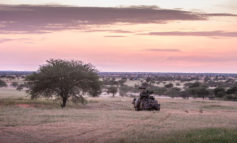
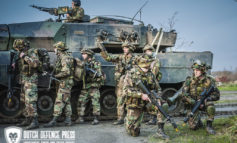
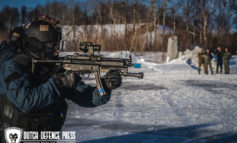
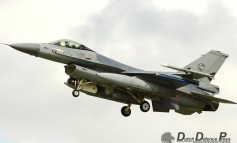
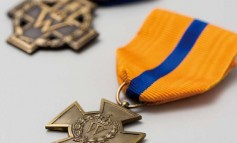



1 Comment
Thanos
1 maart 2022 at 06:42I am an officer of the Greek Special forces. I would like to ask what is the procedure to enlist in the Dutch SF. What are the requirements and the training I will have to follow? Thank you very much.